Indian Beverages: Basic Overview
Common Ingredients
Common Preparing Methods
Key Taste
Drinking Etiquette
Culinary Festivals
Influence and Fusion
Classifications of Indian Beverages
-
Alcoholic
Indian alcoholic beverages can be made from a variety of ingredients, such as fruits, grains, and tree saps.
These beverages often have the addition of local herbs and spices.
The alcohol content ranges from light to strong.
Certain drinks are deeply rooted in the indigenous cultures.
-
Non-Alcoholic
Most Indian non-alcoholic beverages are very sweet and enriched with dairy products.
Herbs and spices are common flavorings for these beverages.
There are many summer beverages in India, which often have a tangy flavor and are served with ice.
Many non-alcoholic beverages are an important part of India’s street food scene.
Indian beverages are drinks prepared and enjoyed throughout India. These beverages mainly hail from local cuisine, though many options were influenced by changes brought by British colonial rule.
Many Indian beverages are well-known throughout South Asia, such as Pakistan, Sri Lanka, Bangladesh, and Nepal. Through trade and immigration, drinks from India have also acquired an international reputation.
The extensive use of spices and dairy products characterizes many non-alcoholic beverages in India, while the alcoholic options are diverse in nature.
Continue reading to learn about the general features of traditional Indian beverages, their global popularity, and the list of the greatest 17 beverages in India. Next, I will delve into what makes Indian beverages stand out.
The Most Popular 18 Indian Beverages
Read on to discover the 18 most beloved Indian beverages. I have included advanced filters to help you sort these options by popularity, ingredients, tastes, and preparation methods.
Are you interested in traditional and national beverages? Or are you looking for street drinks and fusion concoctions? You can find them all in this guide!
Masala Chai
- Non-Alcoholic
- Fusion
- National
- Street Beverages
- Traditional
Masala chai is a popular Indian beverage made with spiced milk tea. It goes well with many types of snacks, sweets, and bread, such as samosa, kachori, pakora, gulab jamun, and paratha.
While black tea had long been consumed in India, it had limited appeal, and modern masala chai was only popularized during the British colonial times.
Indian locals usually include milk and masala spice blend in the original British milk tea recipe to make it more Indian. Each region or Indian vendor may have their own choice of spices, leading to diverse flavors in this milk-based tea beverage.
The typical spices included in masala chai are cardamom, nutmeg, cinnamon, and ginger. Flavor-wise, this iconic Indian beverage can range from sweet to spicy.
Cutting chai is a masala chai variant that typically has half the standard serving size.
Indian Filter Coffee
- Non-Alcoholic
- National
- Street Beverages
- Traditional
Indian filter coffee, sometimes called Madras-style coffee, is a popular coffee beverage in India. Locals often refer to it as kaapi, a word derived from the English “coffee.”
Indian filter coffee appeared in the Karnataka region of India in the early 17th century and has its roots in South India. Locals use a special stainless filter consisting of two smaller chambers.
To have a frothy cup of filter kaapi, local sellers continuously pour the mixture of coffee and milk into the cup and let it brew for a couple of minutes. The resulting beverage pairs well with many breakfast dishes in South India, like idli, dosa, upma, and idiyappam.
Lassi
- Non-Alcoholic
- Street Beverages
- Traditional
Lassi is a thick Indian yogurt-based beverage hailing from the Punjab region in the north. It can have many extra ingredients, such as salt, spices, herbs, fruits, or aromatic water.
One of the most popular lassi variations is mango lassi, which features fresh mangoes in the yogurt-water mixture. This version is widely available at cafes and street vendors throughout India.
With its sweet and creamy flavor, lassi pairs excellently with hot curries, savory grilled meats, and many kinds of snacks. My top suggestions are butter chicken, tandoori chicken, and biryani.
Chaas
- Non-Alcoholic
- Street Beverages
- Traditional
Chaas is an Indian beverage made by churning yogurt and water in a pot and then adding ingredients like cumin powder, black salt, and fresh herbs. It has many names throughout the country and is known in English as buttermilk.
SInce chaas offers a refreshingly tangy taste, it is a favorite thirst quencher during hot summer months. Depending on the seasoning, this curd-based beverage can be mildly spicy or savory.
Many people enjoy chaas as a digestive aid after daily meals or festive feasts. This beverage can accompany many kinds of dishes, like roti, aloo gobi, and biryani.
Shikanji
- Non-Alcoholic
- Street Beverages
- Traditional
Shikanji, also known as Indian lemonade or limeade, is a traditional beverage hailing from the Northern region. It offers a hint of saltiness besides the typical tartness of those little Indian lemons.
This Indian version of lemonade is made from freshly squeezed lemon or lime juice, water, sugar, and a blend of spices. Locals often serve it chilled in hot summer months, with street vendors being the most popular suppliers of this beverage.
Manh snacks and appetizers, like samosa, pakora, and papadam, go well with shikanji.
Jal-jeera
- Non-Alcoholic
- Street Beverages
- Traditional
Jal-jeera is a rejuvenating Indian beverage with a vibrant green color. Its name stems from the Hindi words “jal,” meaning “water,” and “jeera,” referring to cumin.
Traditionally, the base of this beverage is either lemonade or another tangy liquid. The key to its unique flavor is the jal-jeera powder mix, which contains a blend of mint and cumin.
Moreover, Indians also garnish jal-jeera with boondi (tiny, fried chickpea flour balls), which soaks up the liquid and provides a pleasant crunch.
Jal-jeera apparently originated along the banks of the Ganges River in Northern India. This spicy and tangy barrage is often served as an appetizer, especially in the summer.
Enjoy jal-jeera with snacks and appetizers like pani puri, kachori, pakora, and papadam.
Haldi Doodh
- Non-Alcoholic
- Traditional
Haldi doodh, also known as turmeric latte or golden milk, is a healthy beverage dating back to ancient India. People prepare it by simmering milk with turmeric powder and other spices like cinnamon, ginger, and black pepper.
Haldi doodh is characterized by its warm, spicy taste and creamy texture. Some versions feature honey or sugar.
Many Indians consider haldi doodh an Ayurvedic medical remedy and consume it before bedtime as a standalone drink. Nevertheless, feel free to pair it with sweets like barfi and gulab jamun.
Thandai
- Non-Alcoholic
- Traditional
Thandai is a famous Indian beverage associated with Holi, or Festival of Spring. Its name means “something cold/ refreshing,” referring to its cooling qualities ideal for the hot season.
This festive beverage is mainly popular in North India. Its main ingredients are rose water, milk, sugar, nuts (like almonds), saffron, and other spices; some versions even feature bhang (cannabis/marijuana).
To make thandai, locals finely crush the spices into powder before adding it to the milk, creating a creamy concoction with hints of spices and nuts. Staple snacks and sweets like ras malai, malpua, and barfi go well with thandai.
Falooda
- Non-Alcoholic
- Traditional
Falooda is an Indian dessert drink with a rich history inspired by the flavors of Persian cuisine. Its modern version can be traced back to the Mughal Empire, which spanned between the 16th and 19th centuries.
Over time, this cold dessert beverage was embraced by the Hyderabad Deccan and Carnatic regions of India, each adding their unique twists to the original recipe. Today, falooda is not only enjoyed as a drink but also served as a dessert.
At its core, falooda consists of a delicate mixture of rose syrup, vermicelli, and basil seeds, all soaked in milk. The noodles used in this drink are commonly made from cornstarch, arrowroot, or wheat, lending a smooth texture.
Falooda has become a popular choice for weddings and celebratory events across India. For added flavor, many popular variations of falooda include ice cream or jelly.
Sweets like gulab jamun or ras malai can complement the creamy flavor of falooda, though many Indians consume this cold beverage on its own.
Jigarthanda
- Non-Alcoholic
- Street Beverages
- Traditional
Jigarthanda is an Indian cold beverage originating from the bustling city of Madurai in Tamil Nadu, South India. Its name translates to “cold heart/ liver,” which aptly describes the cooling nature of this popular summer drink.
On hot days, street vendors can be found serving jigarthanda as a respite from the sweltering heat. Key jigarthanda ingredients include milk, sarsaparilla root syrup, ice cream, and almond gum.
The sarsaparilla root syrup lends an earthy, herbal undertone to jigarthanda, while the almond gum provides a sweetness. Meanwhile, the addition of ice cream introduces a velvety richness.
Jigarthanda is a popular street beverage that locals often enjoy on its own or with light snacks. Some versions incorporate clotted cream for extra richness.
Panakam
- Non-Alcoholic
- Traditional
Panakam, alternatively known as panagam or panaka, is a traditional Indian summer beverage hailing from the south. Local people love having this for weddings or Ram Navami (Lord Rama’s birthday festival).
Traditionally, panakam is served at Hindu temples as prasada (religious offering in Hinduism). Its main ingredients are jaggery, holy basil leaves, and spices like ginger and cardamom.
Panakam offers a sweet and tangy taste with a hint of spice, making it an invigorating drink to consume in summer. This flavor profile goes well with many light dishes in South Indian cuisine, like idli, dosa, and upma.
Paneer Soda
- Non-Alcoholic
- Fusion
Paneer soda is a popular carbonated drink flavored with rose essence or other floral flavors in India, especially in the southern region. In this case, the term “paneer” refers to rose water, not paneer cheese.
Depending on the type of syrup used, paneer soda ranges from blue to vibrant red in color. Locals enjoy both homemade and packaged versions sold at soda shops.
Paneer soda is a sought-after cooling drink on hot days and a palate cleanser. Ideal accompaniments are snacks and sweets like pakora, samosa, papadam, and barfi.
Feni
- Alcoholic
- Traditional
Feni is a unique Indian liquor native to the state of Goa in the Western region. Locals use either coconuts or cashews to create its base.
Cashew-based feni is the more popular variant. Ripe cashew fruits are pressed to extract their juice, which undergoes a meticulous distillation process to become a potent spirit with a distinctive, fruity aroma and a sharp, pungent taste.
With an alcohol content of around 45%, feni is excellent for mixing with fruit juices, making cocktails, and sipping neat. Alternatively, enjoy feni with grilled meat and spicy dishes, such as vindaloo, chicken tikka, and tandoori chicken.
Arrack
- Alcoholic
- Traditional
Arrack is a distilled alcohol widely enjoyed in India, Sri Lanka, and Indonesia. It is typically made from grains, coconut flowers, and sugarcane.
The Indian version of arrack often has rice as the primary ingredient, resulting in an alcohol content that ranges from 33% to 50%. In some regions of the country, people also prepare arrack using toddy, a type of palm alcohol.
Like other fine spirits, the flavor of arrack improves over time. Aged arrack is ideal for serving alongside curries, savory specialties, and spicy dishes, like vindaloo, tandoori chicken, and chicken tikka.
Toddy
- Alcoholic
- Traditional
Toddy is an Indian palm or coconut wine that dates back to ancient times in the southern region. Its name was apparently derived from “taddy,” a word meaning “fermented palm sap’s drink.”
There are many alternative names for toddy in India. You might find it as tari in the Bengali language, kallu in the Tamil language, and so on.
To make toddy, locals collect palm or coconut sap, let it ferment within a day, and distill the resulting liquid to get a more intense flavor.
Indians usually don’t ferment toddy for more than one day to prevent the beverage from becoming overly sour and acidic. Typical toddy boasts a sweet taste and an alcohol content of 4%, making it a fantastic match for spicy dishes.
Chhaang
- Alcoholic
- Traditional
Chhaang, also known as chhyang, is an Indian beer-like beverage that originated in the eastern Himalayan region, particularly in Tibet and Nepal. It is common in border states like West Bengal and Sikkim.
People often brew chhaang from barley, millet, or rice grains. The preparation of chhaang involves a unique process of semi-fermentation in a bamboo barrel called a dhungro.
Chhaang sports a signature milky white color, although some versions have a murky yellow hue. This sweet and tangy alcoholic beverage is typically served at room temperature during the summer months.
Apong
- Alcoholic
- Traditional
Apong, or apo, is a traditional Indian rice beer from the northern states of Arunachal Pradesh and Assam. Known for its murky brown color, it is strongly associated with the indigenous tribal cultures.
Locals mainly serve apong in ancestor worship ceremonies and festivals, such as Nyokum (a festival of the Nyishi tribe). Different tribes or communities within the region have their unique names for Apong.
Made from rice and local herbs, apong boasts a sweet flavor profile with a subtle hint of saltiness.
I’ve covered the most famous beverages in India, so the next section aims to give you an overview of Indian drinks in general.
Sharbat
- Non-Alcoholic
- Traditional
Sharbat is a traditional Indian drink famous for its beautiful color and aromatic scent. Created in Persia, it appeared in India during the Mughal times.
There are many different variations of sharbat, depending on the ingredients. With a base of water and sugar (or jaggery), this Indian drink delight often features many different flavorings, such as fruit or fruit juices, spices, and aromatic syrup.
Rose water, lemon juice, mangoes, sandalwood, wood apples (locally known as bael), and phalsa (a type of native berry) are popular ingredients for sharbat in India. Locals also decorate the drink with fresh rose petals and basil seeds.
Gulab sharbat (made with rose syrup) is the most popular variety. To streamline the preparation process, Indians usually prepare this drink with Rooh Afza, a famous concentrated syrup brand in South Asia.
I’ve covered the most famous beverages in India, so the next section aims to give you an overview of Indian drinks in general.
What Are the Notable Features of Beverages in India?
Below are six useful facts about Indian beverages and how locals consume them.
Drinking Age
The legal age for drinking and purchasing alcohol in India ranges from 18 to 21, depending on the state.
Diversity
India offers a wide range of beverages, from sweet, milky drinks to spicy, savory concoctions. This diversity is a reflection of the country’s varied climate, topography, and cultural traditions.
In particular, North India and South India contribute many well-known options to India’s drink repertoire. The north prefers creamy, sweet drinks, while the south has a liking for coffee and refreshing summer beverages.
Use of Spices and Herbs
Many Indian beverages are flavored with various spices and herbs, like cardamom, saffron, ginger, mint, and basil.
Seasonal Variations
Many Indians consume beverages seasonally. For instance, tangy and cooling drinks are popular in the hot summer months, while warm, spiced beverages are preferred during the cooler seasons.
Festive and Ceremonial Use
Certain beverages hold a special place in Indian festivities and ceremonies, especially in Hindu rituals.
Street Food Culture
Many beverages are widely available at Indian street stalls, accompanying tasty Indian food dishes, helping diversify the country’s vibrant street food culture. Enjoying these beverages is a popular means of socializing and relaxing.
What have you learned about Indian beverages today? Share your findings and thoughts in the comment section! I’d love to hear your feedback.
If you find this compilation of Indian beverages helpful, remember to share it with your friends!


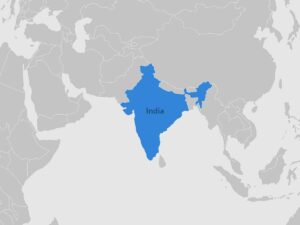
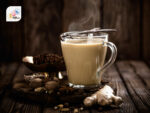
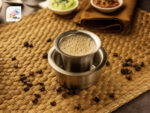
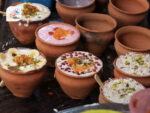
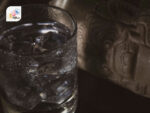
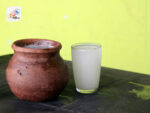

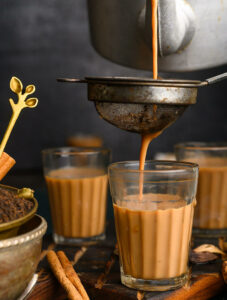
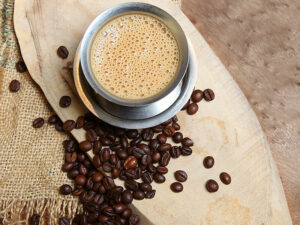
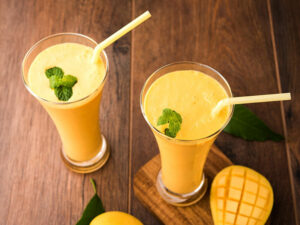
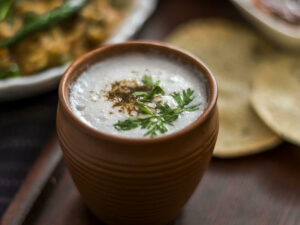
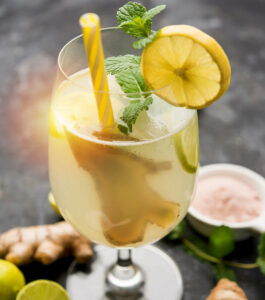
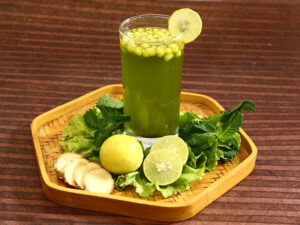
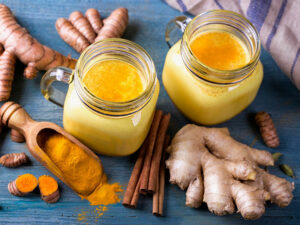
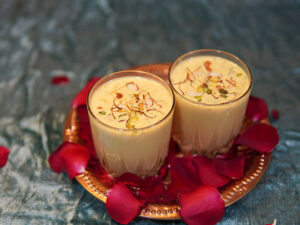
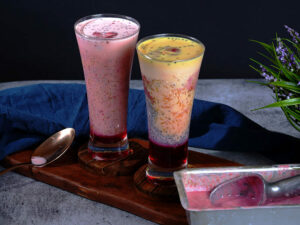
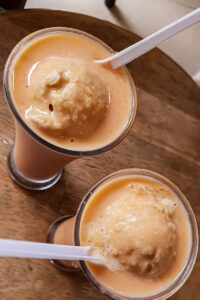
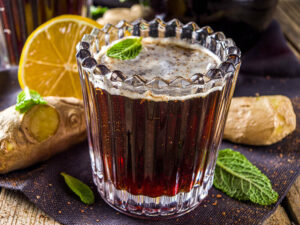
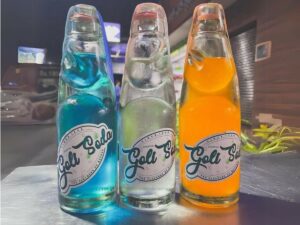
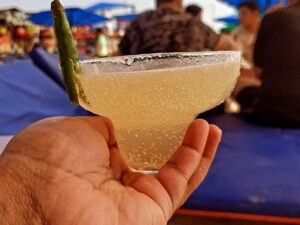
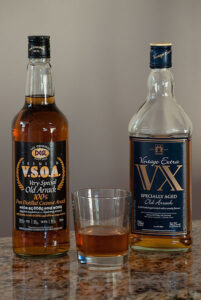
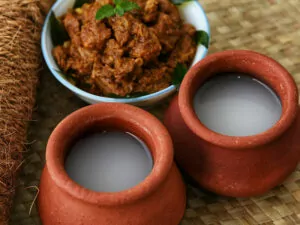
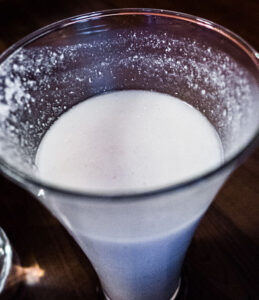
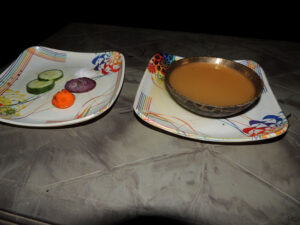
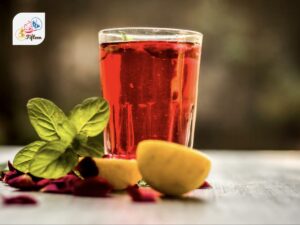
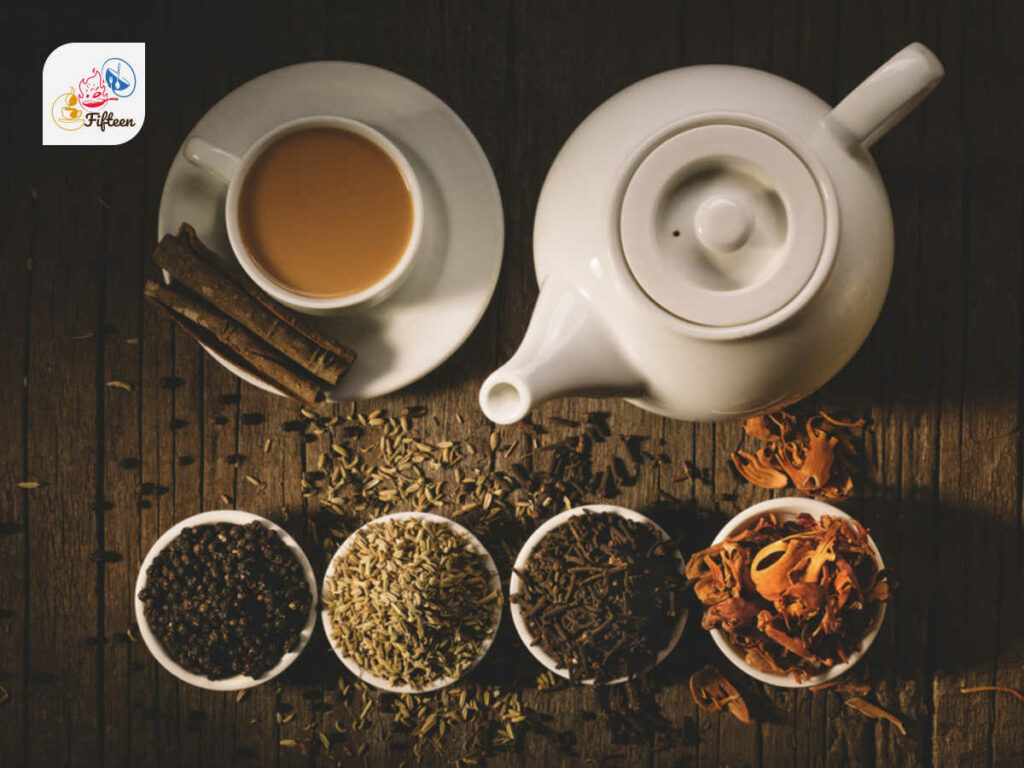
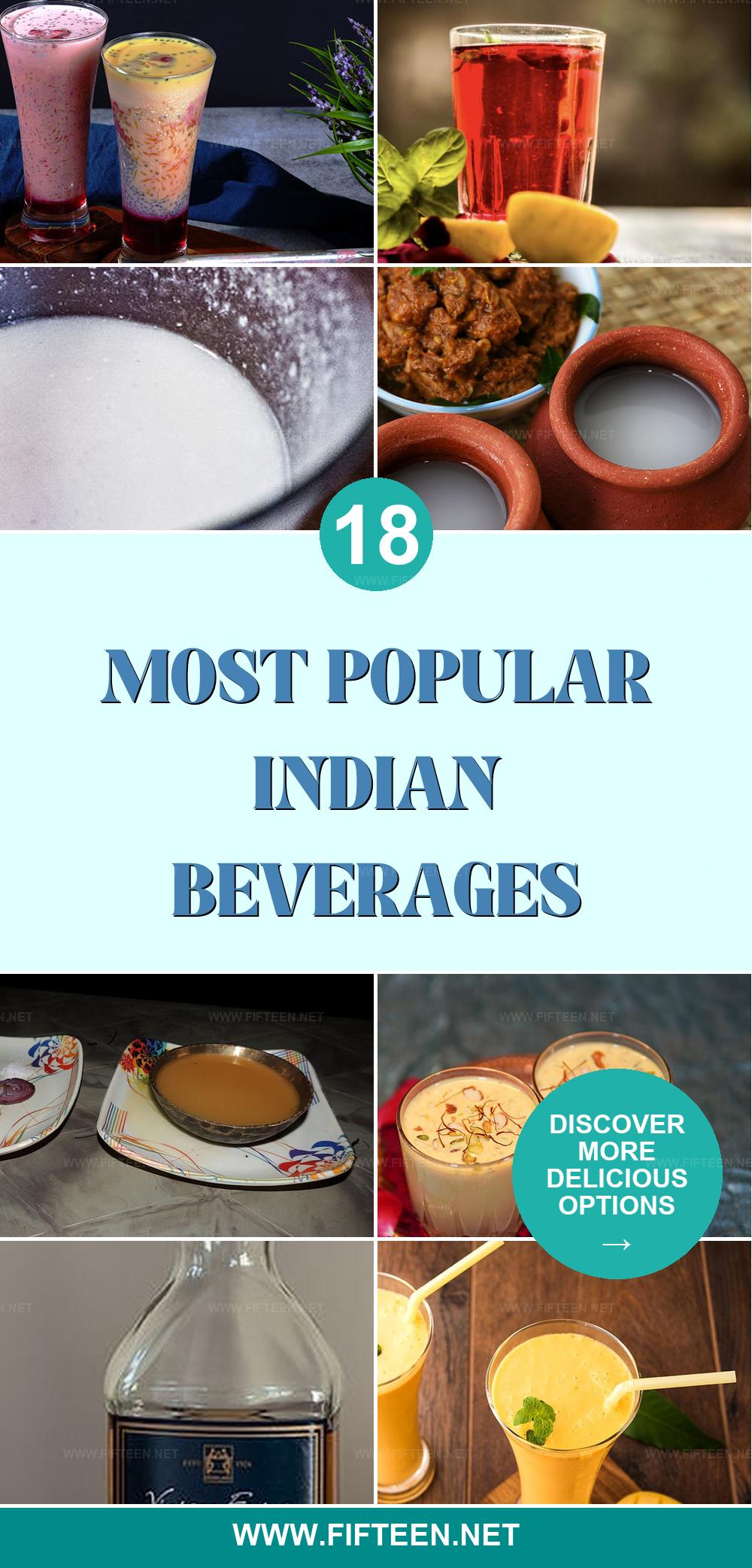
Jamie Scott
Editor in Chief, Senior Content Writer
Expertise
Home Cooking, Meal Planning, Recipe Development, Baking and Pastry, Food Editor, Cooking-video Maker, Western Food Evaluation Expert
Education
Le Cordon Bleu College of Culinary Arts
Local Community College, New York, NY
Jamie Scott is a skilled culinary expert and content creator specializing in Western cuisine. With over 15 years in the culinary field and formal training from Le Cordon Bleu, Paris, Jamie deeply understands how to blend nutrition with delicious flavors. His passion for cooking matches his commitment to making healthy eating accessible and enjoyable.
On Fifteen.net, Jamie brings a fresh perspective to classic dishes and beverages, offering readers insightful recipes, cooking tips, and a fresh view on meal planning that emphasizes taste, health, and simplicity.